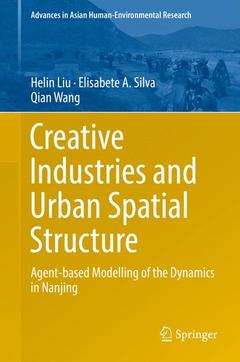Description
Creative Industries and Urban Spatial Structure, Softcover reprint of the original 1st ed. 2015
Agent-based Modelling of the Dynamics in Nanjing
Advances in Asian Human-Environmental Research Series
Authors: Liu Helin, Silva Elisabete A., Wang Qian
Language: English
Approximative price 105.49 €
In Print (Delivery period: 15 days).
Add to cartPublication date: 10-2016
Support: Print on demand
Approximative price 105.49 €
In Print (Delivery period: 15 days).
Add to cartPublication date: 08-2015
238 p. · 15.5x23.5 cm · Hardback
Description
/li>Contents
/li>Comment
/li>
Helps the reader to further understand cities in transition in China by historical and descriptive analysis of the case of Nanjing, which represents the second Tier in China urban system
Presents the reader how the complex interactions among the creative firms, the creative workers, the urban government and the individual citizens in terms of urban land use can be brought together under one research framework in a tempo-spatial perspective
Shows the reader detailed techniques of how to build a spatially explicit agent-based model integrated with GIS data (ABM + GIS)
Illustrates how this original spatially agent-based model can be applied in practice to help formulate policies on land use plan and on the development of creative industries
Includes supplementary material: sn.pub/extras




